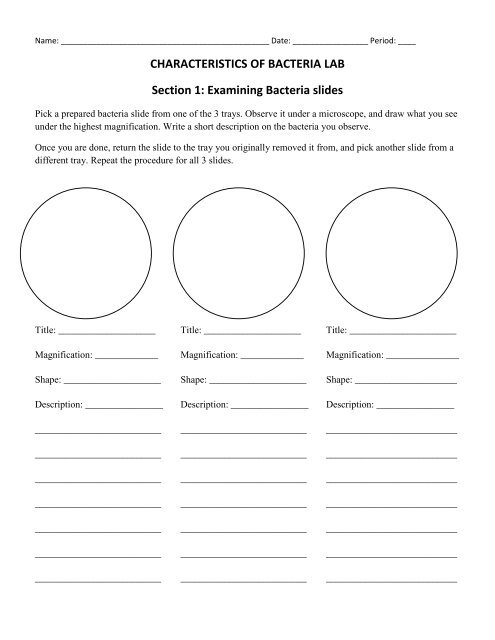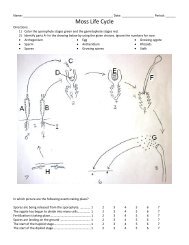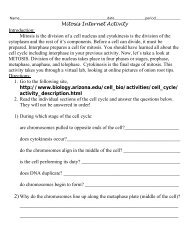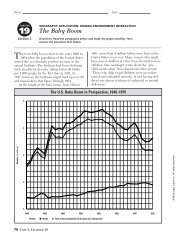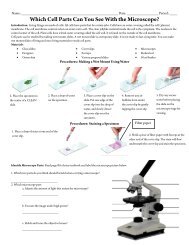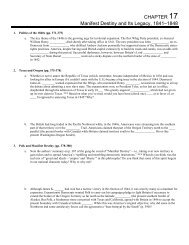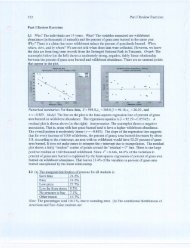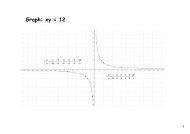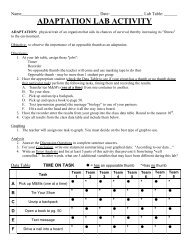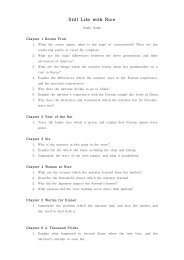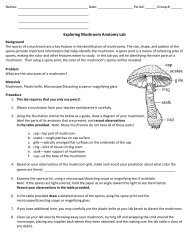Section 2: Examining Bacteria in Yogurt
Section 2: Examining Bacteria in Yogurt
Section 2: Examining Bacteria in Yogurt
Create successful ePaper yourself
Turn your PDF publications into a flip-book with our unique Google optimized e-Paper software.
Name: _______________________________________________ Date: _________________ Period: ____<br />
CHARACTERISTICS OF BACTERIA LAB<br />
<strong>Section</strong> 1: <strong>Exam<strong>in</strong><strong>in</strong>g</strong> <strong>Bacteria</strong> slides<br />
Pick a prepared bacteria slide from one of the 3 trays. Observe it under a microscope, and draw what you see<br />
under the highest magnification. Write a short description on the bacteria you observe.<br />
Once you are done, return the slide to the tray you orig<strong>in</strong>ally removed it from, and pick another slide from a<br />
different tray. Repeat the procedure for all 3 slides.<br />
Title: ____________________ Title: ____________________ Title: ______________________<br />
Magnification: _____________ Magnification: _____________ Magnification: _______________<br />
Shape: ____________________ Shape: ____________________ Shape: _____________________<br />
Description: ________________ Description: ________________ Description: ________________<br />
__________________________ __________________________ ___________________________<br />
__________________________ __________________________ ___________________________<br />
__________________________ __________________________ ___________________________<br />
__________________________ __________________________ ___________________________<br />
__________________________ __________________________ ___________________________<br />
__________________________ __________________________ ___________________________<br />
__________________________ __________________________ ___________________________
<strong>Section</strong> 2: <strong>Exam<strong>in</strong><strong>in</strong>g</strong> <strong>Bacteria</strong> <strong>in</strong> <strong>Yogurt</strong><br />
Pre-lab: Some types of bacteria can ferment milk, produc<strong>in</strong>g lactic acid <strong>in</strong> the process. <strong>Yogurt</strong> is a product<br />
of fermentation. It is acidic and stays fresh longer than milk, and is also digested more easily. In this<br />
exercise you will prepare a microscope slide of yogurt to exam<strong>in</strong>e the bacteria found with<strong>in</strong>.<br />
Like all organisms, bacteria are given scientific names (usually Lat<strong>in</strong> or Greek roots), <strong>in</strong> which nam<strong>in</strong>g rules<br />
learned last chapter are seen. Rod-shaped bacteria are called bacilli, Spiral-shaped bacteria are called<br />
spirilla or spirochetes, and spherical bacteria are called cocci.<br />
Materials:<br />
Procedure:<br />
• toothpick<br />
• dab of yogurt<br />
• microscope slide<br />
• drop of water<br />
1. Dab a drop of water onto a blank microscope slide<br />
• coverslip<br />
• microscope<br />
2. Us<strong>in</strong>g a toothpick, place a small dab of yogurt <strong>in</strong> the water drop on the microscope slide.<br />
Caution: Do not eat <strong>in</strong> the laboratory.<br />
3. Mix the yogurt <strong>in</strong> the drop of water and carefully add a coverslip.<br />
4. Exam<strong>in</strong>e the slide with a compound microscope.<br />
5. Record your observations by draw<strong>in</strong>g and label<strong>in</strong>g a picture of what you see <strong>in</strong> the microscope, <strong>in</strong>clude<br />
the lens you used (magnification). Draw it under low and high magnification.<br />
Draw and label:<br />
Magnification: _______________ Magnification: _________________
Analyze and Conclude:<br />
Use complete sentences!<br />
1. Recall the terms bacillus, coccus, and spirilla. Which type or types of bacteria did you observe <strong>in</strong> your<br />
slides?<br />
_________________________________________________________________<br />
2. Many people do not produce lactase, which is an enzyme that breaks down the milk sugar lactose. Thus,<br />
lactose-<strong>in</strong>tolerant people have trouble digest<strong>in</strong>g dairy products. Why might they have fewer problems<br />
eat<strong>in</strong>g yogurt?<br />
_________________________________________________________________<br />
_________________________________________________________________<br />
_________________________________________________________________<br />
_________________________________________________________________<br />
_________________________________________________________________<br />
<strong>Section</strong> 3: <strong>Bacteria</strong>l Replication<br />
Watch the video “<strong>Bacteria</strong>l Replication.” Next, answer the follow<strong>in</strong>g questions us<strong>in</strong>g complete sentences:<br />
(Use your notes, if needed. Answers may not be <strong>in</strong> the video.)<br />
1. Name the process by which bacteria replicate: ________________________________________________<br />
2. What type of reproduction is it? ____________________________________________________________<br />
3. What is the disadvantage of this type of reproduction? __________________________________________<br />
_______________________________________________________________________________________________<br />
_______________________________________________________________________________________________<br />
_______________________________________________________________________________________________<br />
4. If bacteria can replicate so quickly (20 m<strong>in</strong>utes per replication cycle for E. coli), then why are we not ‘up to<br />
our knees’ <strong>in</strong> bacteria? _____________________________________________________________________<br />
_______________________________________________________________________________________________<br />
_______________________________________________________________________________________________<br />
_______________________________________________________________________________________________<br />
_______________________________________________________________________________________________
5. Name and describe two uses for bacteria that take advantage of their fast replication rate:<br />
_______________________________________________________________________________________________<br />
_______________________________________________________________________________________________<br />
_______________________________________________________________________________________________<br />
_______________________________________________________________________________________________<br />
6. Name another way for bacteria to transfer their genes? What structure of the bacterial cell is necessary for<br />
this? ____________________________________________________________________________________<br />
7. Name the small circular DNA that usually conta<strong>in</strong>s very few genes, and is usually transferred <strong>in</strong> the process<br />
you named <strong>in</strong> #6: _________________________________________________________________________<br />
8. Describe the process you named <strong>in</strong> #6 with as much detail as possible: ______________________________<br />
_______________________________________________________________________________________________<br />
_______________________________________________________________________________________________<br />
_______________________________________________________________________________________________<br />
_______________________________________________________________________________________________<br />
_______________________________________________________________________________________________<br />
_______________________________________________________________________________________________<br />
9. <strong>Bacteria</strong> are so diverse, that if we were to go outside, pick two random bacteria from the soil, and compare<br />
their DNA, chance are that the differences would be greater than the differences between the DNA of a<br />
human and a fruit fly. How is that possible? (H<strong>in</strong>t: How old are bacteria?) ___________________________<br />
_______________________________________________________________________________________________<br />
_______________________________________________________________________________________________<br />
_______________________________________________________________________________________________<br />
_______________________________________________________________________________________________<br />
_______________________________________________________________________________________________<br />
_______________________________________________________________________________________________<br />
_______________________________________________________________________________________________<br />
_______________________________________________________________________________________________


